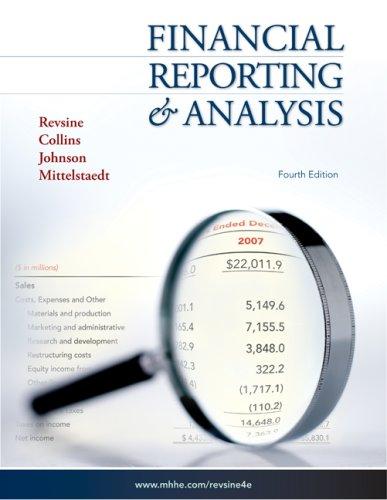In August 2007, analysts were expecting Whole Foods Market's sales to be $6,450 million in 2007 and
Question:
In August 2007, analysts were expecting Whole Foods Market's sales to be $6,450 million in 2007 and $7,500 million in 2008. Net income was expected to be $147 million and $151 million in 2007 and 2008, respectively.
Required 1. Using the steps outlined in Appendix B to this chapter and the spreadsheet template available on the textbook Web site, prepare 2007 and 2008 forecasted financial statements (balance sheets, income statements, and cash flow statements) for Whole Foods Market. Your forecasts should incorporate the following assumptions:

a. Sales for 2007 and 2008 will equal $6,450 million and $7,500 million, respectively. Investment and other income will be $20 million each year.
b. All other income statement items (except pre-opening and relocation costs and interest expense) are expected to equal their 2006 levels as a percentage of sales. Interest expense is expected to be close to zero (see item [e] below). Pre-opening and relocation costs are expected to be $40 million each year.
c. The company’s income tax rate will be 40%.
d. Cash and cash equivalents are expected to be 2.0% of sales.
e. Long-term debt and capital lease obligations are expected to remain at around $10 million each year. Current installments of long-term debt will be $50,000 each year.
Interest expense will be essentially zero each year because amounts are rounded to the nearest $100,000.
f. All other balance sheet items except Common stockholders equity are expected to equal their 2006 levels as a percentage of sales. Depreciation expense (included in item [b]) is estimated to be $178.0 million and $207.0 million in 2007 and 2008, respectively. Accumulated .
depreciation was $706.1 million and $589.2 million in 2006 and 2005, respectively.
g. Development costs of new store locations (included in Direct store expenses in item [b]) are expected to be $200 million each year, and are classified as an investing (not operating) cash flow item by the company.
h. The company will continue to pay dividends of about $60 million each year. The company will issue or buy back stock during 2007 and 2008 to meet its cash flow needs or to distribute excess cash. Additional forecast assumptions may be needed.
i. Round all percentage calculations to the nearest one-half of a percent for forecasting purposes (e.g. 2.35% becomes 2.5%).
2. How do your net income forecasts from requirement 1 compare with those of the analysts ($147 million and $151 million in 2007 and 2008)? What does this tell you about your forecasting assumptions compared to those used by the analysts?
3. How do your sales, net income, accounts receivable, total assets, and operating cash flow forecasts for 2007 and 2008 compare to the amounts actually reported by the company in those two years? What factors are likely to explain sizable differences between the actual figures and your forecasts?
Step by Step Answer:






